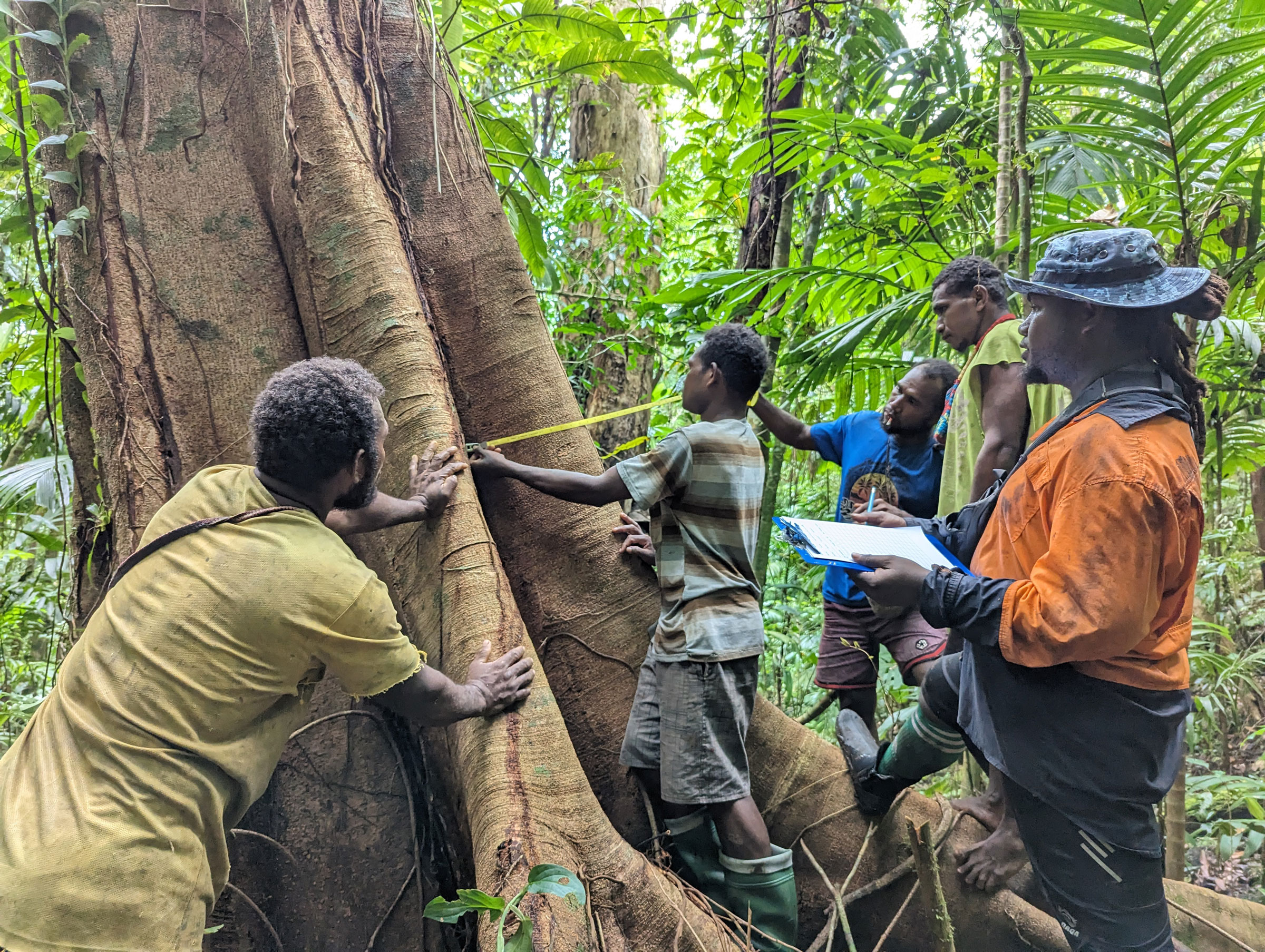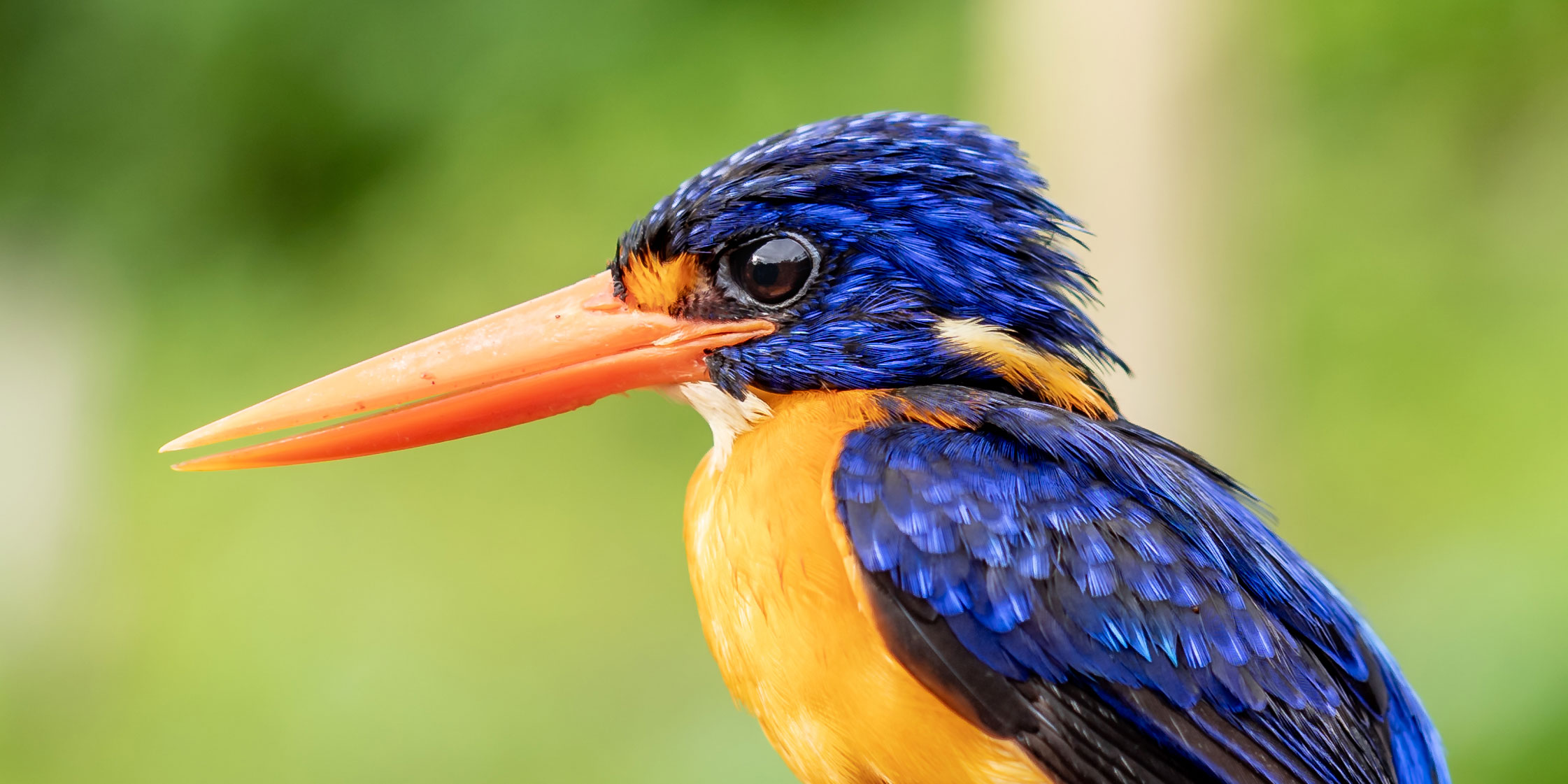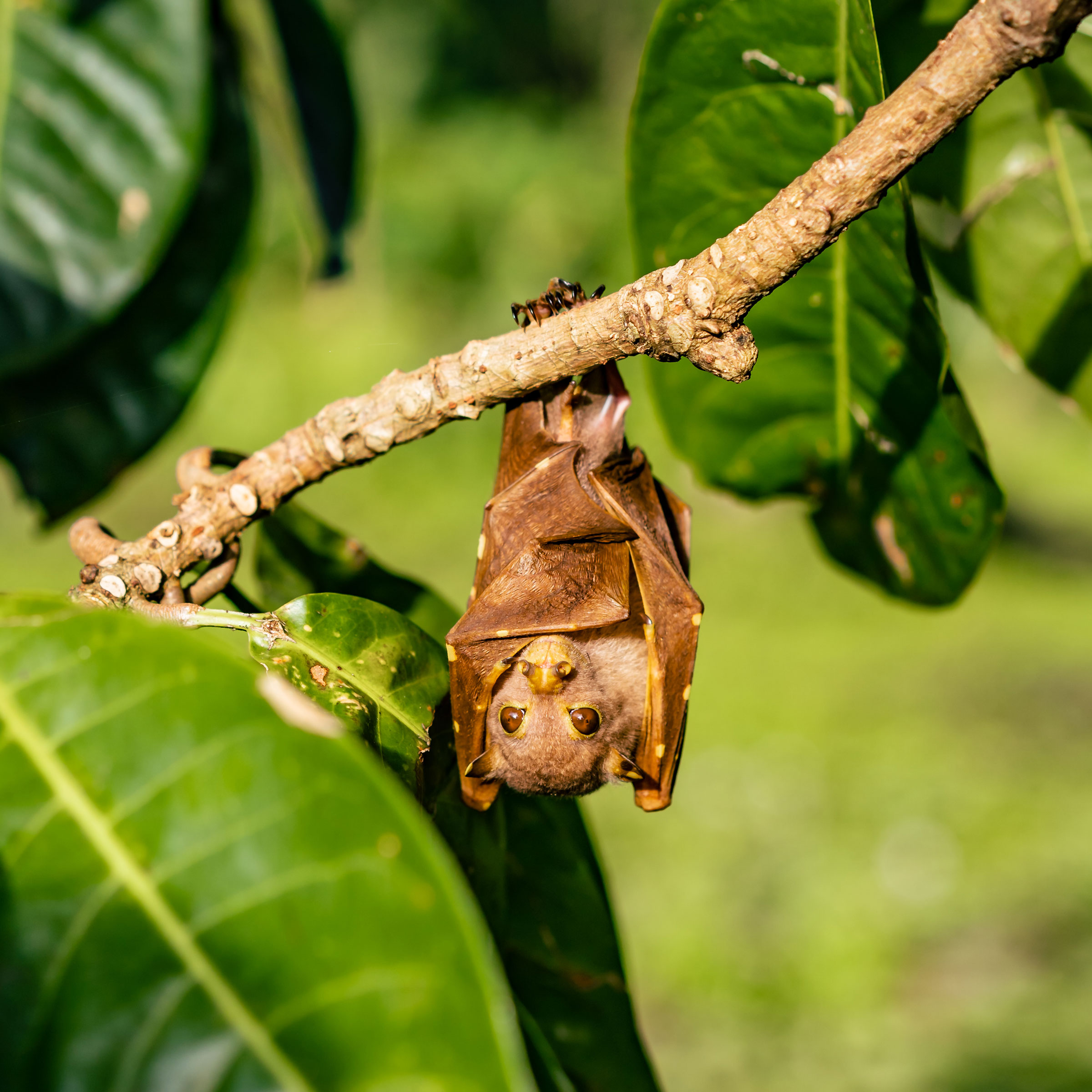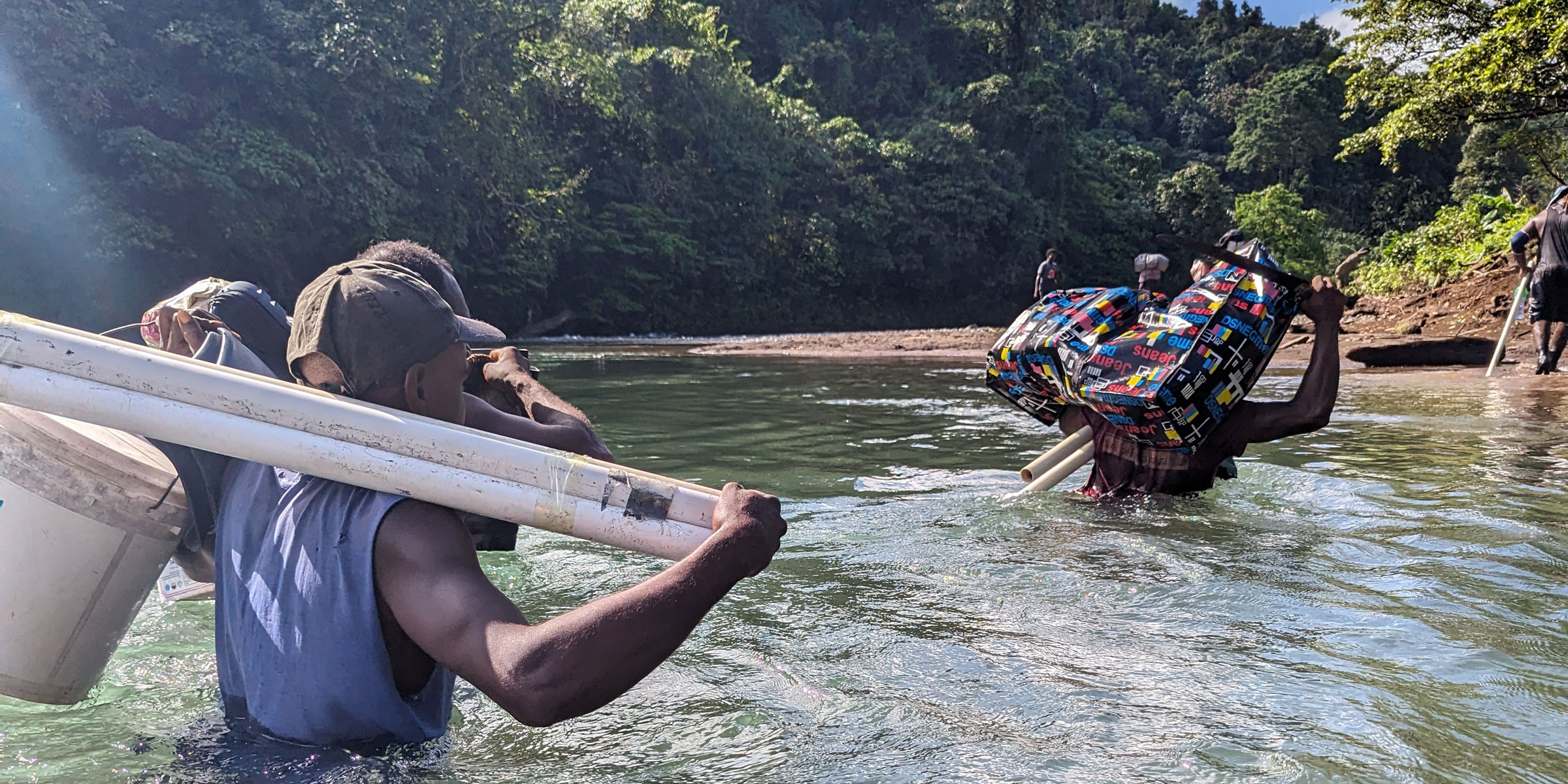
Wheatley Teu Zinghite
Forestry consultant Keith Moveni provides a briefing in the forest.
In the vast, interconnected web of our global ecosystem, there are few places as critical or as vulnerable as the Solomon Islands. This archipelago—celebrated for its lush forests and vibrant biodiversity is recognized by the United Nations for its ‘global importance’—is now threatened by the relentless axes of loggers, population growth, and a changing climate. In this fragile environment, a small group of forest rangers in Viru Harbor, Western Province, are stepping forward. They are warriors armed only with a passion to conserve what remains.
The partnership between the Government of Solomon Islands and the U.S. Government through MCC has prepared over 800 hectares of land, roughly the equivalent of 1,120 American football fields, to become a potential haven for biodiversity in a sanctuary named Sobehatunga. Sobehatunga is not just a patch of green in the middle of the Pacific, but a stronghold for carbon capture and storage, a refuge for biodiversity and a generational lifeline for the local community.
Preserving the Natural Habitat
This critical habitat houses many species, some of which are teetering on the brink of extinction. According to the International Union for Conservation, Sobehatunga, located in Viru Harbor, cradles some of the last lowland rainforest in the Western Province, a thread connecting the past to a precarious future.


Douglas Jnr Pikacha
The work of the FoVEP program is preserving the habitats of wildlife native to Sobehatunga such as the Variable dwarf Kingfisher and the Umboi tube-nosed bat.
How does a plot of land become a conservation success story? The path was neither straightforward nor simple. It starts with stringent criteria: the plot must be a minimum of 500 hectares, face an imminent threat from logging, be unencumbered by landowner disputes and solidly on the path to becoming a legally protected area. Once these conditions were met, the real work began with a comprehensive inventory of the forest - a blend of traditional wisdom and modern technology.
At the heart of this endeavour stands Keith Moveni, a consultant with the Ministry of Forestry and Research. He is a a quiet hero, training rangers—both men and women—in the techniques of forest inventory. Armed with tape measures and laser beams, Moveni and his colleagues measure tree circumferences and gauge tree heights with precision, document plant and animal species using a smartphone app, and patrol the land to monitor changes in forest conditions. This data collection translates to creating a detailed, actionable map of the forest’s health and carbon storage potential.

Wheatley Teu Zinghite
Forestry workers measure a tree.
Organizations like Nakau, Live & Learn (Solomon Islands) and the Natural Resources Development Foundation are key players in these training sessions for MCC and the Government of Solomon Islands. Nakau’s Forest Ecosystem Specialist, Manuel Haas, underscores the core of the mission: “To measure these trees physically is to ground our fight against the invisible forces that threaten them. It’s to understand, deeply, what we stand to lose.”
Protecting the Forest for the Trees
The work is demanding and often gruelling. Rangers navigate dense forests, scale steep inclines, endure torrential rains and sleep in makeshift shelters. It is a test of endurance as well as unyielding dedication.

Kevin Sura
Workers crossing the river with equipment on their shoulders.
In the Solomon Islands, forests represent more than just scenery; they are the source of life and livelihood. Yet unsustainable logging practices cast a long shadow. Under the MCC-Solomon Islands Threshold Program, more than 540 people across participating communities have participated in technical training sessions on forestry-carbon accounting and livelihoods. Over 40 percent of participants are women, highlighting the inclusive and community-focused approach to these projects.

Wheatley Teu Zinghite
Forestry consultant Keith Moveni talks with the forest rangers and both male and female ranger trainees in Viru Harbor, Western Province.
Forests are the Solomon Islands’ most important natural asset. In 2022, MCC and the Solomon Islands Government agreed to develop an alternative forest management strategy to reduce environmental impacts and to benefit more community members. The forest carbon project at Viru Harbor is one example of our efforts, with more sites to follow.
Preserve and Protect
The story of the Sobehatunga rangers is not just a local narrative; it is illustrative of the larger global struggle for sustainable development. It highlights how local actions can contribute to global solutions, and how the preservation of a single forest can have a ripple effect that benefits the entire planet.
These rangers are on the forefront of this battle. Their work is physically demanding, yet it is also profoundly rewarding. They are the stewards of a fragile ecosystem, the guardians of a critical natural resource, and the architects of a more sustainable future.
The MCC-Solomon Islands Threshold Program is enabling tangible actions today that will have ripple effects through generations to come. It is a promise of a better future where forests are protected, wildlife thrives, and communities benefit. It is a reminder that there is always a way forward: one tree at a time, one step at a time, and one forest at a time.
For more information on the Solomon Islands Threshold Program, please visit sithp.com.sb.

